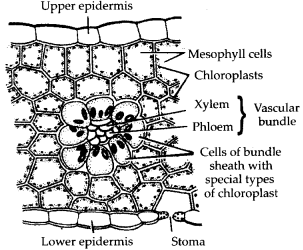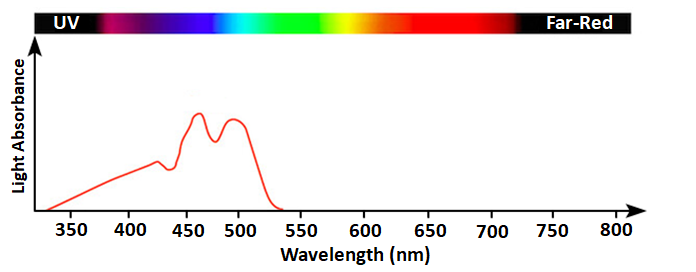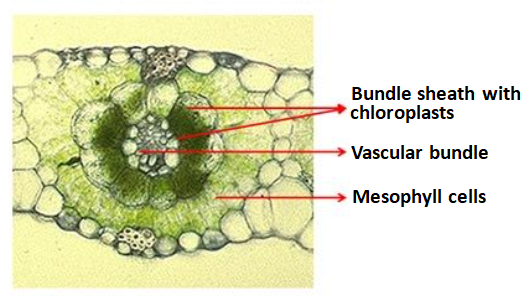Robin Hill discovered that the isolated chloroplasts from plants can release oxygen when they are illuminated by sunlight in the presence of a suitable electron acceptor. This showed:
I. oxygen () is produced by a reaction that is separate from carbon dioxide () fixation.
II. the reaction in which oxygen is released requires light.
III. the light dependent reaction of photosynthesis is a result of a series of redox reactions.
1. I and II only
2. I and III only
3. II and III only
4. I, II and III
I. oxygen () is produced by a reaction that is separate from carbon dioxide () fixation.
II. the reaction in which oxygen is released requires light.
III. the light dependent reaction of photosynthesis is a result of a series of redox reactions.
1. I and II only
2. I and III only
3. II and III only
4. I, II and III
The enzymes for synthesis of organic molecules, in autotrophic bacteria, are located:
1. on chloroplast membranes
2. in the cytosol
3. in the nucleoid region
4. along the inner surface of the plasma membrane
The absorption spectrum shown in the given figure can be of:
1. Chlorophyll a
2. Chlorophyll b
3. Carotenoids
4. Either 1 or 2
The number of electrons that need to be transported during cyclic photophosphorylation in sulphur bacteria, to produce one molecule of ATP is:
1. one
2. two
3. three
4. four
The pH of the space of thylakoid of isolated chloroplast is decreased and then transferred in the dark to a pH-8 solution. The result would most likely be:
I. The isolated chloroplasts will make ATP.
II. The Calvin cycle will be activated.
III. Cyclic photophosphorylation will occur.
1. Only I
2. Only I and II
3. Only I and III
4. Only II and III
A possible purpose of photorespiration may be:
1. assimilation of nitrate from the soil
2. translocation of carbohydrates
3. enhanced PGR efficiency
4. differentiation of plant cells
The following diagram shows bundle sheath cells with “special” types of chloroplasts. What is special about them?

1. They are larger than normal size
2. They are agranal
3. They are dimorphic
4. Calvin cycle cannot take place in them
What conclusion can be drawn from the finding that while some bacteria have only photosystem I, cyanobacteria have both?
1. Photosystem II was lost in some species as it was selected against by the nature.
2. Photosystem I must be more ancestral.
3. Photosystem II may have evolved to be more photoprotective.
4. Cyclic photphosprolylation is more important than non cyclic photophosphorylation.
Heme and iron-sulfur complexes in photosynthesis:
1. act as reducing agents
2. act as oxidizing agents
3. both oxidize and reduce during electron transport
4. are needed only in respiration but not in photosynthesis
Both and CAM pathways are regarded as compromises. The reason for this would be:
1. Both pathways lead to reduction of photosynthesis to enable water conservation.
2. To maintain high photosynthetic levels compromises on water loss and CAM compromises on loss of carbon.
3. Both minimize photorespiration and optimize the Calvin cycle.
4. To maintain high photosynthetic levels CAM compromises on water loss and C4 compromises on loss of carbon.





